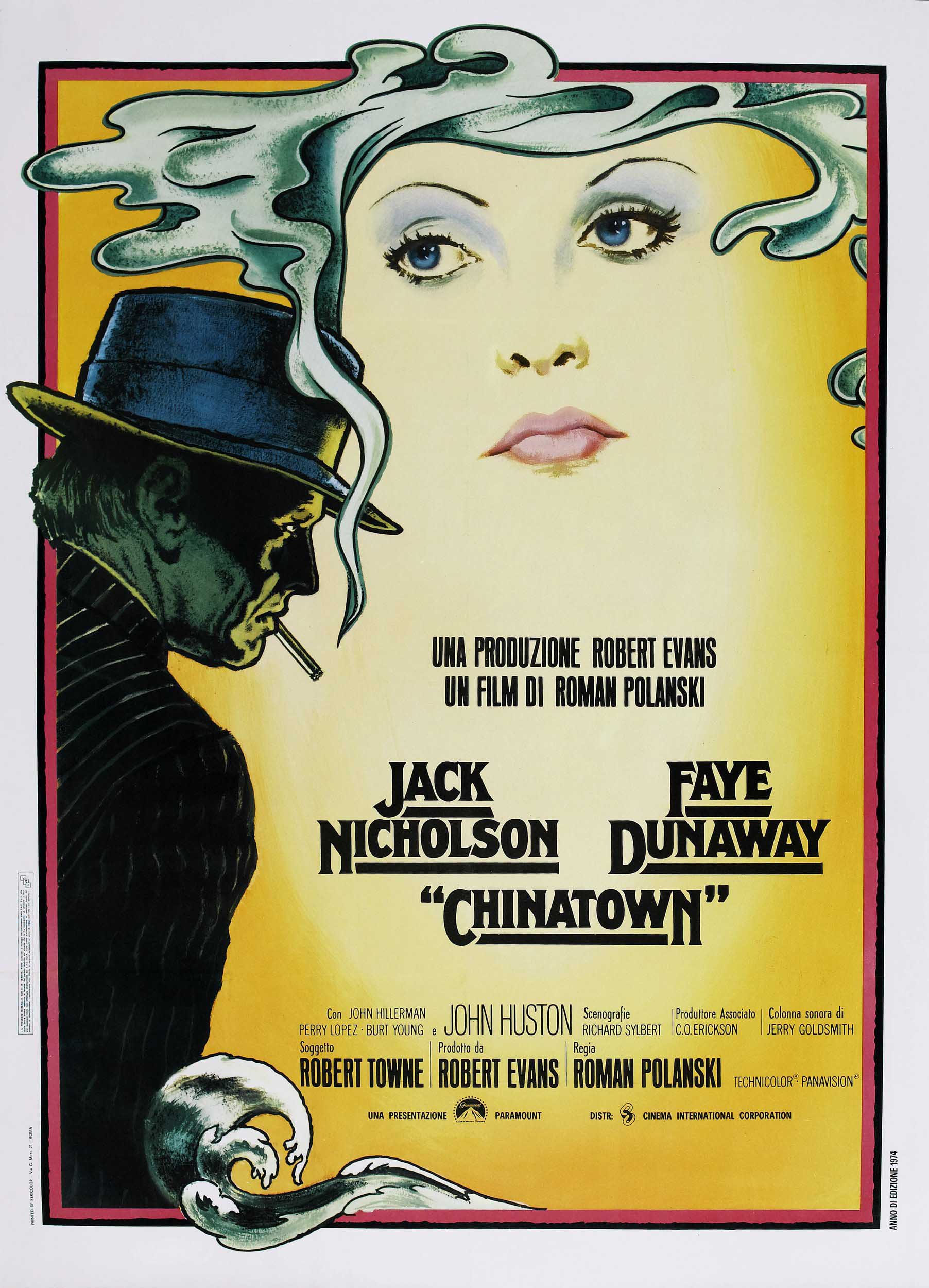The main theme of Chinatown is power and who holds it. Roman Polanski re-enforced this through framing. How he chose to arrange characters and items on the screen showed the audience what it needed for the story, and also evoked an emotional response to create the film’s powerful atmosphere.
In the very first scene, in the third shot, the main character is introduced. JJ Gittes is comforting Curley, but he is layed back in the chair behind his desk. Gittes, in his white suit with his right leg crossed over the left, looks comfortable. This is the place where Gittes is in his element, lying to make someone feel better. The authority in the scene rests with him. Over his right shoulder is a picture of FDR, a trophy, and a plaque – images of power and authority.
The first scene contrasts with the next, where Gittes meets the fake Mrs. Mulwray. Gittes, layed back in his chair, has lots of room ahead of him to look, but when he speaks with Mrs. Mulwray he is at the right side of the frame, and he is looking to the right. The space in front of him is limited, he can not see as far. Over his shoulder is his associate. This image clearly shows the situation Gittes is getting into; it is a mystery where he can not see much ahead of him and his associates will be in the dark.
After he is hired by the fake Mrs. Mulwray he begins following Mr. Mulwray. The framing here shows how Gittes isn’t seeing the whole picture. Since he never actually meets Mr. Mulwray he only sees him through other things and other people. First he sees him at the town hall meeting where the two do not appear together in the frame and Gittes is near to the back of the room. After that Gittes sees him through binoculars, in his car’s side mirror, in the pictures that Walsh takes, through the camera where he takes Mulwray’s picture, and through the pictures of Mulwray in the offices of Water and Power.
Gittes, spurred into the investigation by his hatred of being conned, follows the trail to find Noah Cross. At a lunch meeting at Cross’ ranch Gittes and Cross sit on joining sides of a square table. It begins with the two men equal and balanced on opposite sides of the frame, with the servant in the mid-ground between them. In the middle of the conversation (which falls at the very middle of the film) Gittes is annoyed by what Cross says regarding Evelyn and he stands to leave. When he stands the background on his shot changes from Cross’ property to the clear, bright sky. He seems to have hope to figure out the mystery and he is looking down on Cross. But then Cross tells him he does not know what he is dealing with, Gittes says that was what the DA told him in Chinatown, and he sits down. Now he is being pulled into Cross’ web of lies and the camera moves closer to Cross. Now Noah is larger in the frame, Gittes is leaning in, listening carefully.
The tragic conclusion of the film is shot unlike any other scene in the film. Though the steady camerawork at the beginning slowly becomes more uneaven as the mystery deepens, it is here in the final scene where a significantly less organized, handheld style takes over. Longer shots that move around more lose the balance that the steady images held. Like a news camera at a breaking story this scene is hectic and confusing. However, Noah Cross breaks through each shot that he is in to push himself to the foreground. When Katherine appears he moves up to her and takes up two thirds of the frame, looming over her like a monster. Gittes and Evelyn are shuffled apart, and pushed in the backgrounds of the frame until finally she drives away to her death. The final shot begins with a close up on Gittes, but as the police move in to cover up the entire story Gittes’ associates pull him away and they walk into the darkness.




No comments:
Post a Comment